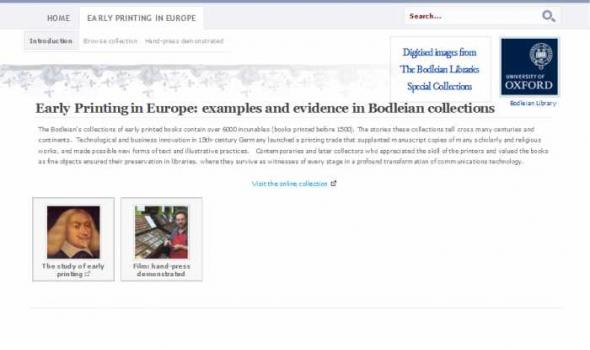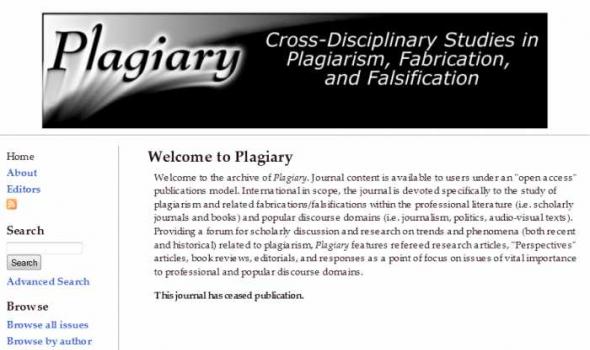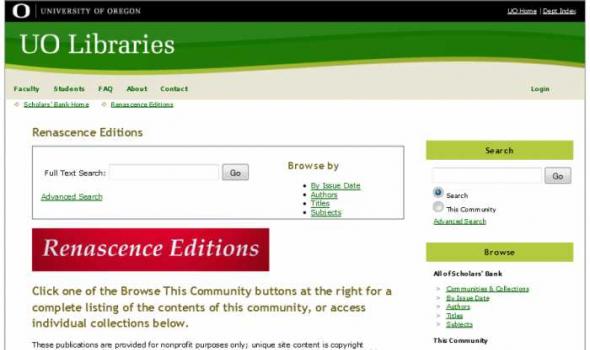Illustration
America's First Illustrator: Alexander Anderson Sixteen scrapbooks, containing close to 10,000 wood-engravings by 19th-century master illustrator Alexander Anderson. Collection History Sixteen scrapbooks, containing close to 10,000 wood-engravings by 19th-century master illustrator Alexander Anderson. Background Alexander Anderson (1775-1870) is considered one of America’s earliest and finest wood-engravers. During a career spanning seventy years, he produced a large number of illustrations for books, periodicals, newspapers, and other commercial ephemera, after both his own designs and those of other artists. Related Resources Books illustrated by Anderson are available in large libraries with strong 19th-century holdings, including NYPL.
General Introduction The purpose of these brief introductory remarks is to tell you, first, what kind of information you can find on this website and, second, how you can retrieve this information. The core of the whole site is a scholarly database. This database contains all kinds of information about the illuminated medieval manuscripts of the Koninklijke Bibliotheek and the Museum Meermanno-Westreenianum. You can get access to this 'electronic catalogue' in various ways. When choosing your way, your own expertise and wishes should guide you. If you do not routinely consult databases and your interest in medieval illumination is not a professional one, you may start with our guided tour.
Phoebe Anna Traquair's exquisite illustrated manuscript of Elizabeth Barrett Browning’s ‘Sonnets from the Portuguese’ is one of the National Library of Scotland's treasures.
Made in Edinburgh between 1892 and 1897, it is among the finest examples of the work of Scotland's leading artist of the Arts and Crafts movement.
The Simon Fraser University Library Editorial Cartoons Collection contains over 9300 original drawings published in Canadian newspapers between 1952 and the present.
You can use the quick search form at the top of the page, or click on the advanced search if you want to limit your searches by date and or by cartoonist. The quick search finds words in the following fields: publication information, cartoonist's name, cartoon text, subjects, and display notes.
Images in the database are made available under specific terms of use.
Most records in the database indicate the "SFU MsC Code" for the cartoon; this is the call number to request the drawing in the Library's Special Collections.
About the Collection The UWM Book Arts Collection contains scanned images of selected artists’ books from the UWM Special Collections-Book Arts Collection. The goal of the UWM Special Collections-Book Arts Collection has been to document and demonstrate the use of the book form as an art medium. The collection’s main focus is on examples of artists' books from the late nineteenth century to the present. Largely represented are examples of American book arts, especially those of the Upper Midwest.
The History of Medicine Division of the National Library of Medicine has a rich collection of illustrated anatomical atlases dating from the 15th to the 20th century. The Historical Anatomies on the Web Project has been designed to broaden access to this collection by providing high-resolution downloadable scans of selected important images from the atlases. Atlases and images have been chosen for their historical and artistic significance by the project's content coordinator, Michael North. Important images may be omitted if the atlas is damaged or fragile, or if the work is bound in such a way as to impede high quality scanning. A priority has been placed upon scanning the earliest and/or the best edition of a work in Library's possession. The scans generally omit text.
Introduction: Dream Anatomy The interior of our bodies is hidden to us. What happens beneath the skin is mysterious, fearful, amazing. In antiquity, the body's internal structure was the subject of speculation, fantasy, and some study, but there were few efforts to represent it in pictures. The invention of the printing press in the 15th century-and the cascade of print technologies that followed-helped to inspire a new spectacular science of anatomy, and new spectacular visions of the body. Anatomical imagery proliferated, detailed and informative but also whimsical, surreal, beautiful, and grotesque — a dream anatomy that reveals as much about the outer world as it does the inner self.
A native Ithacan and the nation's most notable ornithological painter since Audubon. Cornell University holds a large collection of his bird illustrations, as well as his personal papers. You will find here a database with 2500 of these illustrations, as well as an exhibit based on the journal he kept during the 1899 Harriman Alaska expedition. Site design by John Greek. Most recent site update: October 8, 2001.
This site presents digital reproductions of images from the University Archives and from rare books and manuscripts held by the Cornell University Library. The images are delivered via Luna Insight® image browser . Please adjust your browser to allow pop-up windows before attempting to launch the collection. If you continue to experience technical difficulties, please report your problem to vrhelp-l@cornell.edu . For reference questions, please complete our reference form . For questions or comments about this website, send E-mail to rmcweb@cornell.edu .
Introduction by Anne Posega With these words Hanmer voiced England's growing national pride in Shakespeare, a pride materially represented by the numerous editions which were produced in the 18th century. Different editors argued for their textual emendations in prefaces, footnotes, and advertisements, and the debate fueled layer after layer of criticism and responses. In a similar way, the illustrations in these editions were themselves transforming, starting with the first illustrated edition in 1709. Edited by Nicolas Rowe and printed for Jacob Tonson, The Works of Mr. William Shakespear, in Six Volumes was the first edition to be "Adorn'd with cuts". The illustrations in this edition were generally theatrical in nature, with many looking like illustrations of a production.
Digitised images from The Bodleian Libraries Special Collections Search: Early Printing in Europe: examples and evidence in Bodleian collections The Bodleian’s collections of early printed books contain over 6000 incunables (books printed before 1500). The stories these collections tell cross many centuries and continents. Technological and business innovation in 15th-century Germany launched a printing trade that supplanted manuscript copies of many scholarly and religious works, and made possible new forms of text and illustrative practices.
Digitised images from The Bodleian Libraries Special Collections Search: Masterpieces of the non-Western book The Bodleian has had unusual opportunities to acquire, through the activities of collectors in the 17th, 18th, and 19th centuries, a wide range of pictorial material produced in and relating to Asia, the Near East, and South Asia. The Hebrew, Islamic, and South Asian collections are particularly rich in fine illustrated and illuminated manuscripts. Islamic Collections The Bodleian’s Islamic collections include many fine examples of Arabic and Persian manuscript ornamentation.
This collection features approximately 4500 full page plates and other significant illustrations of human anatomy selected from the Jason A. Hannah and Academy of Medicine collections in the history of medicine at the Thomas Fisher Rare Book Library, University of Toronto. Each illustration has been fully indexed using medical subject headings (MeSH), and techniques of illustration, artists, and engravers have been identified whenever possible. There are ninety-five individual titles represented, ranging in date from 1522 to 1867.
Books Online are books that have been digitized, from the University of Toronto Libraries. They are freely available online and out-of-copyright. The collection currently contains 858 titles. The full text of these books can be searched, and they are also listed in our catalogue.
Theodore Bolton Collection Theodore Bolton was a librarian, art historian, and artist. Bolton received a diploma in the arts from that Pratt Institute in Brooklyn, New York, in 1915. He studied library science at the same institute, receiving a diploma in that subject in 1924. He pursued formal academic work later in his life as well, receiving in 1937 a B.S. in education, and a M.A. in education in 1940, both from New York University. Thereafter, he received an M.F.A. from Columbia in 1955. In addition, he studied at Harvard during the summers from 1937 to 1939. Upon his retirement, Bolton and his wife moved to Coconut Grove, Florida. Theodore Bolton died at his Coconut Grove home on Friday, December 7, 1973.
Sidney Paget: Iconic illustrator of Sherlock Holmes 2010 marks the 150th anniversary of the birth of Sidney Paget (1860-1908), an illustrator closely associated with creating a visual identity for Arthur Conan Doyle’s character Sherlock Holmes. The lean, elegant Holmes Paget presented to readers of the Strand magazine worked beautifully with Conan Doyle???s text, and formed the basis for the image of Holmes that remains popular in the public mind to this day.
Pictures came before books, printing or writing, and were our first expression of stories. The Canadian artist Marie Day celebrated the power of cave art in her picture book Quennu and the Cave Bear , an imaginative recreation of how a young girl of the Stone Age conquered her fear of a ferocious cave bear by drawing him. The Stone Age makes a fitting start to an exhibition celebrating Canadian picture books, within which there are no boundaries of place or time. In chronological terms, the earliest painting in this exhibit is 42, the latest, only three years old. The earliest artefact shown here is nearly 3,000 years old, and the story of Quennu depicts a period over 20,000 years ago.
Patent medicine is the term given to various medical compounds sold under a variety of names and labels, though they were for the most part actually trademarked medicines, not patented. In ancient times, such medicine was called nostrum remedium, "our remedy" in Latin, hence the name "nostrum"; it is a medicine whose efficacy is questionable and whose ingredients are usually kept secret.
The trade cards are small, colorfully illustrated advertising cards touting a particular medicine and its many cures. The illustrations often have little to do with any of the ailments purported to be cured. They were pure advertising and very collectible. The era of patent medicine began to unravel in the U.S. with the passage of the first Pure Food and Drug Act in 1906.
Street & Smith Dime Novel Covers Brief History of Street & Smith In 1855, when Francis Scott Street and Francis Shubael Smith bought The New York Weekly Dispatch , Street & Smith embarked on a publishing mission that remained remarkably prolific and profitable for over one hundred years. Street & Smith rapidly became a "fiction factory," producing a wide variety of popular literature, including dime novels, pulp magazines, books in series for juveniles, fashion and homemaking magazines, comics, and adventure stories. The company viewed fiction as a commodity, with Street & Smith editors dictating plots, character types, and other conventions to the firm's stable of writers.
The Most Peculiar History of the Chewing Gum Man, Gelett Burgess (1866-1951), San Francisco, California, 1894 November. About the Author Gelett Burgess was a very prolific author, writing rhymes and stories, drawing pictures, teaching art, and editing a famous humor magazine, The Lark . Among his best-known creations are The Goops, round little creatures he used to demonstrate good and bad behavior. Burgess made a few special books for his friends and family. The ?Chewing Gum Man? was made for his sisters. This story was eventually published in The Burgess Nonsense Book in 1901.
The Collection Just under 300 engravings, watercolors, and illustrations drawn from books, archival collections, and artwork from the Beinecke Library's Western Americana and General collections. Cite as: Beinecke Rare Book and Manuscript Library, Yale University
From the sixteenth through the nineteenth centuries, the royal and aristocratic courts behind Europe’s most illustrious festivals printed elaborate, illustrated volumes to record the celebrations that they organized to mark births, deaths, betrothals, weddings, coronations, and visits. Often circulated for the benefit of rival noble families and in the interests of self promotion, festival books are fascinating witnesses to aristocratic culture and art during the Early Modern period.
Our Mission Norman Rockwell Museum is dedicated to education and art appreciation inspired by the legacy of Norman Rockwell. The museum preserves, studies and communicates with a worldwide audience the life, art and spirit of Norman Rockwell in the field of illustration. The museum is a gathering place for reflection, involvement, and discovery through the enjoyment of the artist’s work. Norman Rockwell’s unique contributions to art and society, popular culture and social commentary influence the museum’s programs and interpretations. Nov 7 Wed NRM Twitter Follow @nrockwellmuseum on Twitter Hours November-April: Weekdays 10 a.m. – 4 p.m. – Weekends and holidays: 10 a.m. – 5 p.m.
Within the vast body of literature on Asia held by the Asia Collection at the University of Hawaii are fascinating illustrations of the people of Asia and the environment in which they live. These images are a visual record of the lives of the people and their surroundings. The sheer number of illustrations makes digitizing all of them an impossible task, so we have decided to concentrate on the theme "Asia at Work." Work is the activity by which so many of us identify ourselves. The tools we use, the human interaction and cooperation that occurs in the course of its performance, and the skills we employ all, to a great extent, help define who we are. Images are arranged by country.
Donald Angus Collection of Botanical Prints Donald Angus' collection of botanical prints are housed at the Bishop Museum, Foster Gardens, the National Tropical Botanical Garden, and the University of Hawai'i at Manoa Hamilton Library. These exquisite illustrations were published in monographs and journals mainly in the 18th and 19th centuries. They reflect the enthusiasm of scientists, and the popularity of the exotic flora being introduced and cultivated in European botanical gardens. Many prints in the Angus collection are from Monandrian Plants of the Order Scitamineae by William Roscoe (1753-1831). Roscoe, a wealthy banker and amateur botanist, founded the Liverpool Botanic Garden in 1802.











































